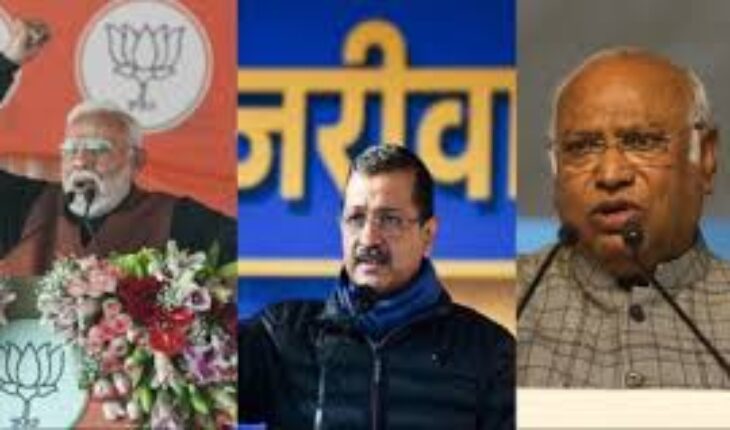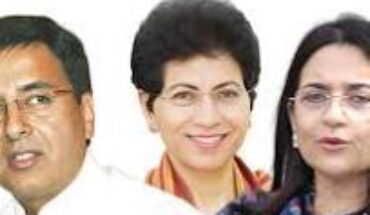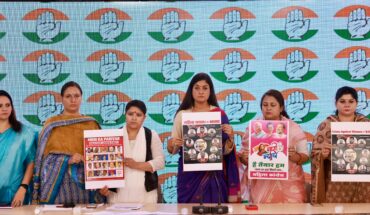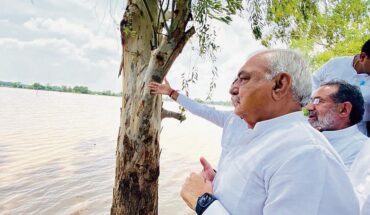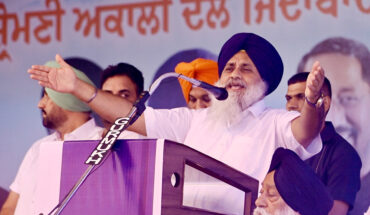New Delhi : As Delhi braces itself for the assembly elections, the political battle in the city’s rural and semi-urban areas—particularly Outer Delhi — has become a focal point of intense competition and has witnessed remarkable transformation over the past decade.
Once firmly loyal to Congress, the region has undergone a significant political transformation. In the aftermath of 2014, the rise of the Aam Aadmi Party (AAP) has disrupted the electoral dynamics in areas such as Narela, Najafgarh, Bawana, and Mehrauli, previously known for their support for Congress. However, as the BJP looks to regain its foothold in these areas, the political contest has intensified.
Historically, these regions leaned towards Congress due to its pro-farmer policies, but AAP’s rise disrupted this trend. By promising transparency, better governance, and improvements in education and healthcare, AAP gained a strong foothold among rural voters. However, as cracks begin to appear in its governance model, the BJP is working to capitalize on voter dissatisfaction and shift the political momentum in its favor.
A key strategy for the BJP has been aligning national development narratives with local concerns. Government data indicates that flagship schemes such as the Pradhan Mantri Gram Sadak Yojana (PMGSY) facilitated the construction of over 8,000 kilometers of rural roads in neighboring states between 2018 and 2023, positively impacting Outer Delhi’s connectivity.
Similarly, the Jal Jeevan Mission significantly improved piped water supply to rural households, with coverage rising from 49% in 2019 to 72% by the end of 2024. Under the Saubhagya Yojana, electricity connections have reached over 98% of rural households, compared to 84% in 2017. These developments have been extensively highlighted in the BJP’s outreach efforts to showcase tangible improvements in living standards.
Organizational strength has been another pillar of the BJP’s strategy. With a network of over 15,000 booth-level workers and 500 local leaders embedded in the region, the party has systematically built trust within tightly knit village communities. Engagement with panchayat leaders and farmer organizations has bolstered the BJP’s grassroots presence. Additionally, data-driven campaign strategies, door-to-door outreach programs, and micro-targeting of voter preferences have reinforced its connection with the electorate.
The role of cultural identity in Outer Delhi’s politics cannot be overlooked. According to a 2024 survey by the Centre for the Study of Developing Societies (CSDS), nearly 68% of respondents in Outer Delhi cited cultural preservation as a major electoral concern. The BJP has leveraged this sentiment by championing religious and cultural causes, positioning itself as the protector of traditional values. The party has also countered AAP’s secular and inclusive image by emphasizing law and order issues, citing a 12% decline in communal incidents in rural Delhi between 2021 and 2024, as per National Crime Records Bureau (NCRB) data.
Agriculture remains central to Outer Delhi’s economy, and both AAP and BJP have engaged in fierce competition for the rural vote. “While AAP initially gained support by waiving electricity bills for farmers, the BJP has sought to position itself as the true champion of rural prosperity. The PM-Kisan Samman Nidhi scheme has provided direct income support to over 1.2 lakh farmers in Outer Delhi since its inception, an achievement the BJP has aggressively publicized,” said Bitto Mathur, social activist and farmer from Kanjhawala.
Additionally, the establishment of 12 farmer producer organizations (FPOs) and the distribution of soil health cards to 75,000 farmers have strengthened the party’s rural outreach.
Simultaneously, “the BJP has worked to erode AAP’s governance credentials by highlighting administrative lapses. A Comptroller and Auditor General (CAG) report from 2023 exposed delays in AAP’s flagship water pipeline projects, affecting over three lakh rural households. Issues such as water scarcity, underdeveloped school infrastructure, and alleged corruption in local governance have been amplified by BJP’s campaign machinery,” said a village community leader sitting on protest in front of SDM Kanjhawala, Delhi. He added, the party has successfully framed these challenges as evidence of AAP’s inability to deliver, contrasting it with the Modi government’s track record of efficiency and transparency.
In recent months, the battle for Delhi’s villages has intensified, with both parties launching aggressive outreach initiatives. The BJP’s efforts were formally kickstarted in December 2023 with Lt Governor V.K. Saxena unveiling the Dilli Gramoday Abhiyan, a program aimed at the comprehensive development of rural Delhi. With an allocation of ₹800 crore, this initiative focuses on installing CCTVs and streetlights, improving hospitals and schools, rejuvenating water bodies, and building community centers. BJP MPs, including South Delhi’s Ramvir Singh Bidhuri, have been actively engaging with village residents, highlighting their contributions to the party’s successive victories in parliamentary elections and projecting a similar outcome in the upcoming Assembly polls.
The AAP, on its part, has doubled down on its governance narrative. In December, Delhi Development Minister Gopal Rai announced that the Village Development Board had sanctioned ₹1,000 crore for infrastructure improvements in rural Delhi. New bus routes were introduced in areas such as Najafgarh, while ₹100 crore was earmarked for essential services. Additionally, AAP has sought to attract influential rural leaders into its fold, with former BJP MLA Brahm Singh Tanwar from Chattarpur joining the party in a significant political coup. Rai’s October 2023 meeting of the Village Development Board approved 100 development projects, including roads, community centers, parks, crematoriums, and sports grounds, in a bid to reinforce AAP’s presence in rural areas.
The Congress, though relegated to the sidelines in recent elections, is attempting a revival through its “Dilli Nyay Yatra” campaign, led by city president Devender Yadav. The party has focused on highlighting farmer grievances, particularly regarding low circle rates and land acquisition compensation. In September, Yadav called for the Lt Governor’s intervention to address these concerns, blaming both the BJP-ruled Centre and the AAP government for their neglect.
Despite these political maneuvers, a significant section of Outer Delhi’s rural electorate remains skeptical about the promises made by all three parties. “There has been no real development in Delhi’s villages for the past three decades,” alleged a member of the Delhi Panchayat Sangh.
He futher added that issues such as the non-implementation of the SVAMITVA scheme for land record digitization, delays in the regularization of rural colonies, and the absence of an authority responsible for executing village development plans have exacerbated voter frustration. Urbanization pressures, coupled with inadequate basic amenities, have also forced many residents to relocate to Haryana and Uttar Pradesh, where better infrastructure and government support are available.
Social activists, too, have voiced concerns over policy gaps. Ashok Shastri, RWA president Rama Vihar, pointed out that the DDA’s master plans repeatedly mention village development but fail to assign clear responsibility to any single agency. “This leads to a blame game between the DDA, MCD, and the Delhi government’s Development Department, with none of them taking ownership,” he said. “Villages lack parks, drainage systems, community centers, colleges, and adequate healthcare facilities. The migration trend is only going to intensify unless concrete steps are taken.”
As the 2025 elections draw closer, the contest for Outer Delhi remains wide open. While the BJP has made significant headway in terms of development initiatives and grassroots engagement, the AAP continues to leverage its governance track record and stronghold in urban pockets. The Congress, despite its diminished influence, is attempting to revive its base by targeting specific voter concerns. However, the ultimate decision will rest with the electorate, which has demonstrated a history of shifting political allegiances based on performance and tangible outcomes.
With less than a week to go before Delhi’s voters head to the polls, Outer Delhi stands as a critical bellwether for the city’s larger electoral trends. Whether the BJP’s strategic recalibration will translate into electoral success, whether AAP can maintain its rural dominance, or whether the Congress can mount a meaningful comeback remains to be seen. But one thing is certain: the battle for Outer Delhi’s villages will be a defining chapter in the capital’s political story.


